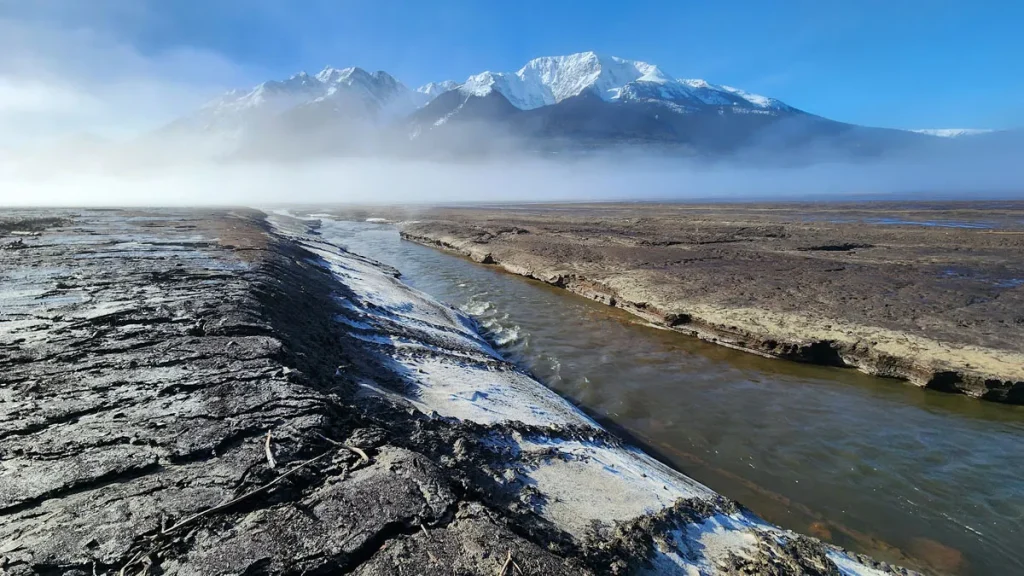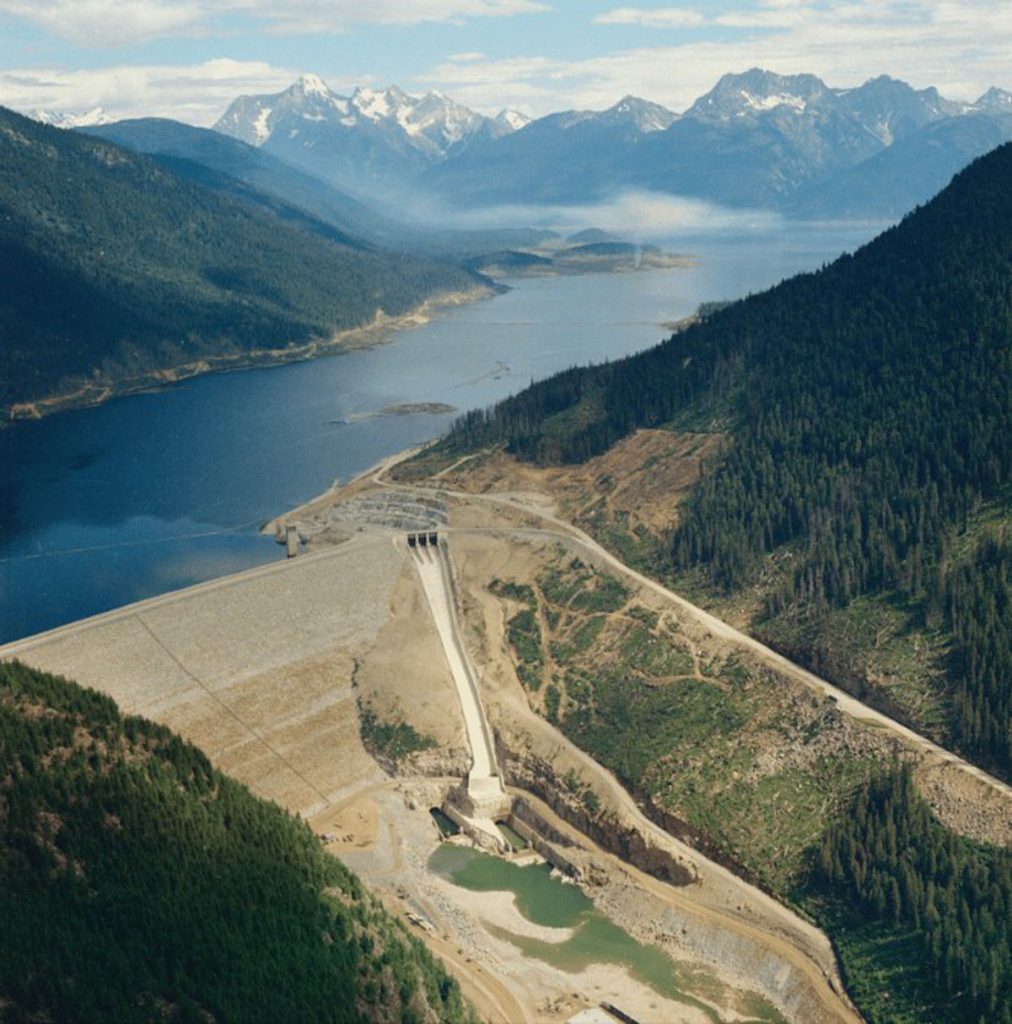
Mica Dam at 50 Years – How An International Treaty Changed the Face of Valemount’s Canoe Valley
The Mica dam is one of the tallest earthfill dams in the world. Prior to the treaty, the Canoe Valley river bottom had been a rich source of lumber and enjoyed by residents for things like trapping, berry picking, and soaking in the year-round hot springs.
50 years ago last week, the Canoe Valley south of Valemount began a transformation that would permanently alter the landscape, the economy, and the future of the area.
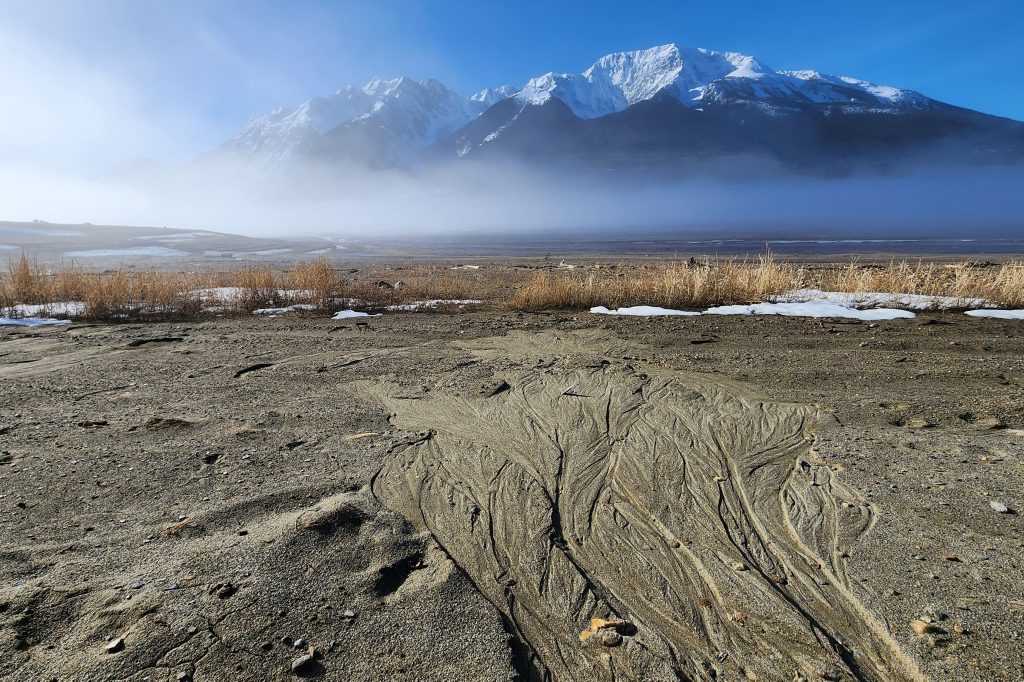
Opinion: Kinbasket Lake’s
history a rocky one
Dust storms are a regular feature of Kinbasket Lake when the water level is low. Spring is a yearly reminder of the fact the lake is actually a reservoir as the drawdown exposes dusty mud flats and driftwood and spawns terrible dust storms until the water rises with the freshet.
Read the article →
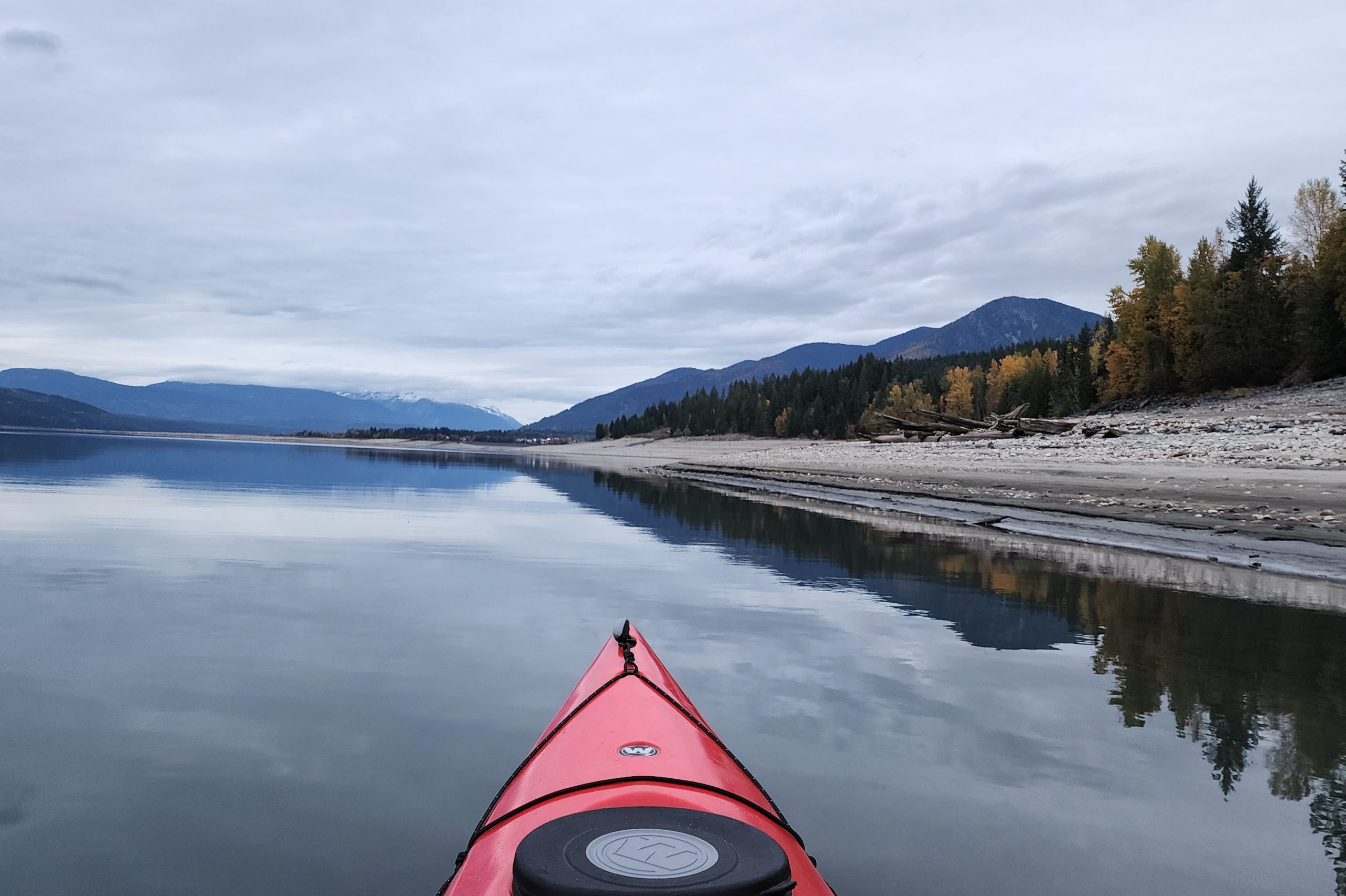
Opinion: Extreme reservoir fluctuations ensure a continuing wasteland
Canada and the US are in the midst of renegotiating the Columbia River Treaty, an agreement that governs water levels in the Columbia Basin including in Kinbasket Lake, the reservoir created by the Mica Dam that ends just south of Valemount.
Read the article →
Work by other writers
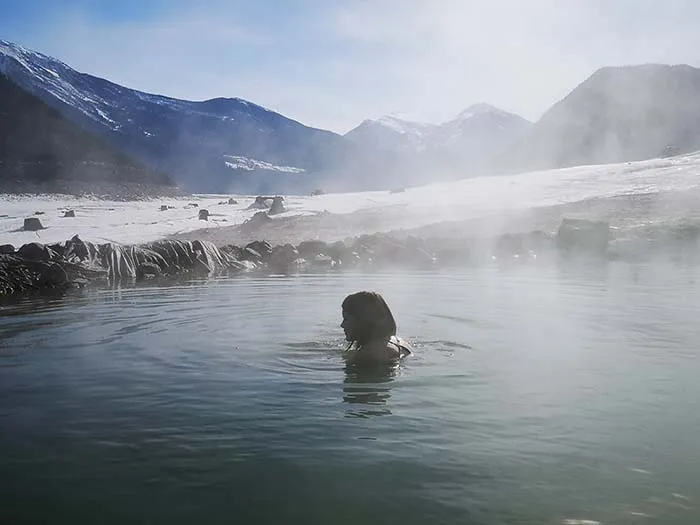
featured story
The changing face of Canoe River hot springs, through five generations
In the early 1900s, pioneers of the Valemount area Fulton McKirdy and his son Angus, stopped at the Canoe River hot springs to wash up on the way home from their trapline for Christmas. A bit less than a century later his 10-year-old great-great granddaughter, Isis Hiroe, heads there for a soak on a springtime family outing. Over the course of five generations the landscape has changed, but that little stream of hot water still gushes from the earth.
